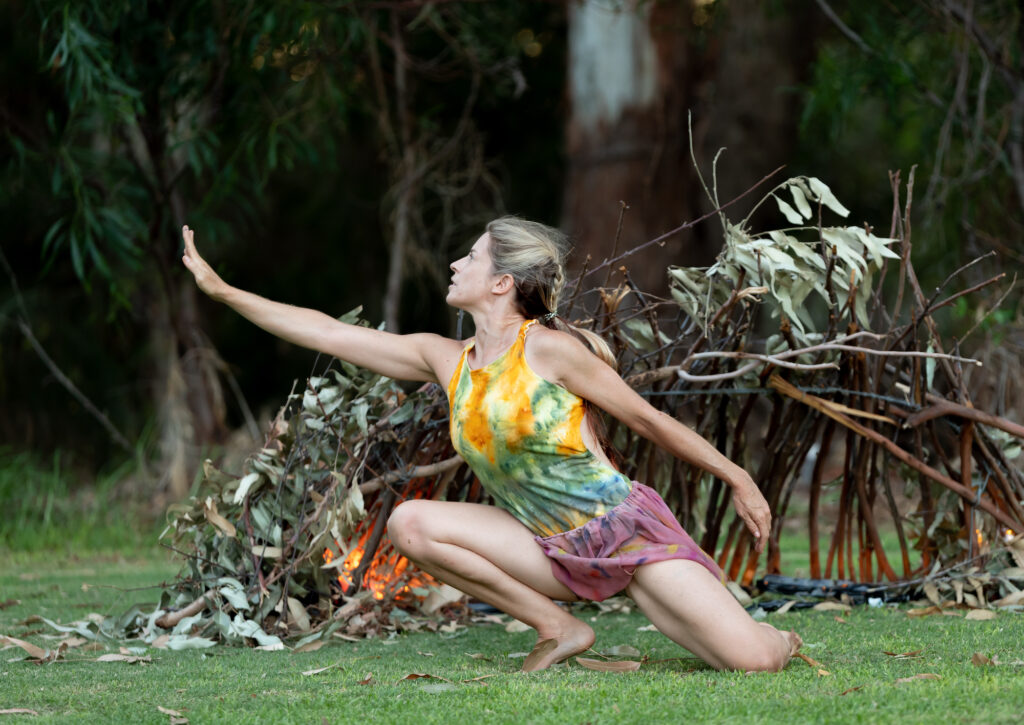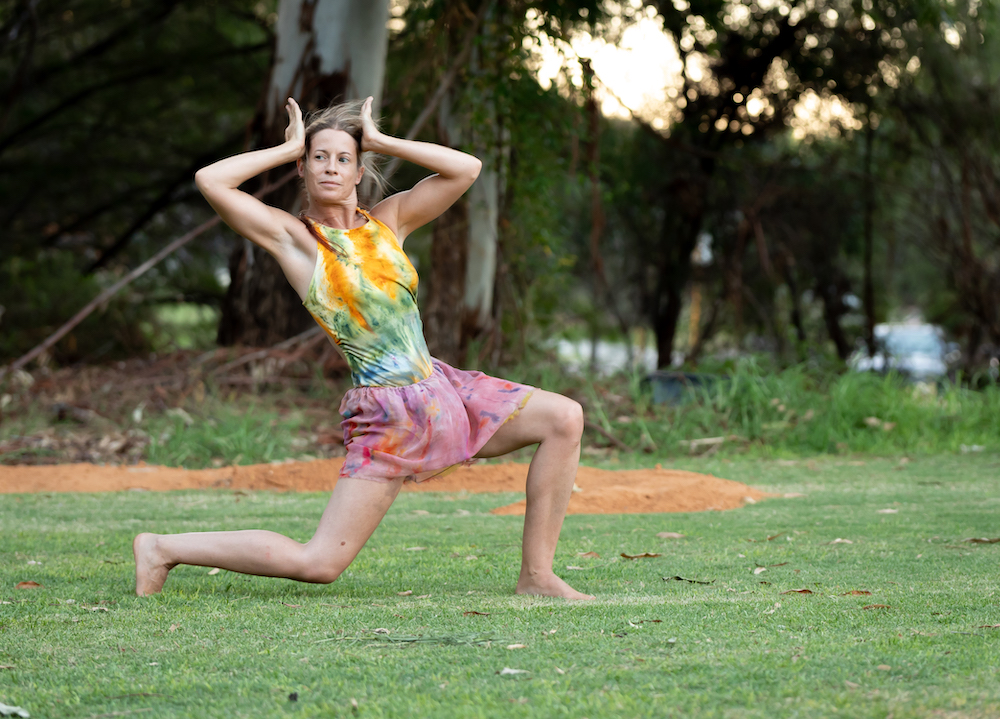Playful and meditative, Floeur Alder’s solo work Djilba (Spring): A moment in time leaves the viewer immersed in the tranquility of its bush setting, writes Kim Balfour.
A moment of tranquility
10 March 2021
- Reading time • 5 minutesDance
More like this
- How to watch ballet
- STRUT Dance comes of age
- Fairytale leaps to life with fun twist
Djilba (Spring): A moment in time, Floeur Alder ·
Eric Singleton Wetlands and Bird Sanctuary, 7 March 2021 ·
The serene Eric Singleton Wetlands and Bird Sanctuary could not have been a more appropriate setting for choreographer Floeur Alder’s new solo dance work, Djilba (Spring): A Moment in Time. Inspired by the Rainbow Coast in WA’s Great Southern region, First Nations stories from that area, and the time of Djilba, the Noongar season of transition and growing, the solo has a playful connection with nature.
Seated beneath a canopy of trees emitting tranquil bird song, the wetlands sanctuary provided Alder’s audience with a genuinely immersive experience. Designer and stage manager Korin Gath’s sets and lighting are minimal, the performance was timed to coincide with the natural light of the afternoon sun through to dusk. A small shelter, or nest, made from leafy branches, piles of sand, and grass sets the environment Alder uses during her earthy, tactile performance.

Alder’s animistic choreography is influenced by Aboriginal lands of south west WA, historical stories of the Menang people (the first people of that region), and the poetry of artist and writer Virginia Ward. Ward and Alder, inspired by these natural landscapes, have worked together to deliver a performative artwork consisting of many colourful and varied layers.
The richness of Alder’s performance of Djilba is complemented by the work’s diverse arrangement of music, from Tibetan flutes and chanting to Aphex Twin’s album Wisp. The soundscape is well suited to Alder’s wide range of movement and vivid dramatic capacity. Costumed in a rainbow mottled leotard and skirt, designed by Ward and Louise Mann, Alder moves with powerful grace, her languid limbs blossoming and imbued with the essence of spring. Alder’s expressive choreography and technical range comprehensively cover many aspects of the eco environments that inspired the work.

Throughout Djilba, we see Alder evolving from her lush and fertile environment; nesting, preening, flying and strutting. The choreography explores the language of new life with precise bird-like actions and behaviours. Alder inhales and exhales with force and energy as she executes lush sweeping movements one moment, and intricate staccato signals the next. The culmination of all Djilba’s elements creates a solo dance work that is mesmerising to watch, itself immersed in nature.
This season of Djilba was preceded by short performances created and performed by Alder’s students, also inspired by Ward’s poetry. As if channelling their teacher’s exacting sensitivity of movement, one student embraced an invisible entity with arms as fluid as water.
As Alder explains in her program notes, Djilba is influenced by her father, Alan Alder, who passed away in 2019. Created a month after his passing, the solo is in part a reflection on how nature can help us move through grief. After such a tranquil evening of dance and nature, I could not agree more.
Although this season of the work has finished, Floeur Alder will be presenting Djilba in Albany, Saturday 10 April, and at All Saints College Centre for Performing Arts, 1-2 May 2021.
Floeur will also be offering a range of workshops over the weekend of 30/31 October – read more here.
Like what you're reading? Support Seesaw.






